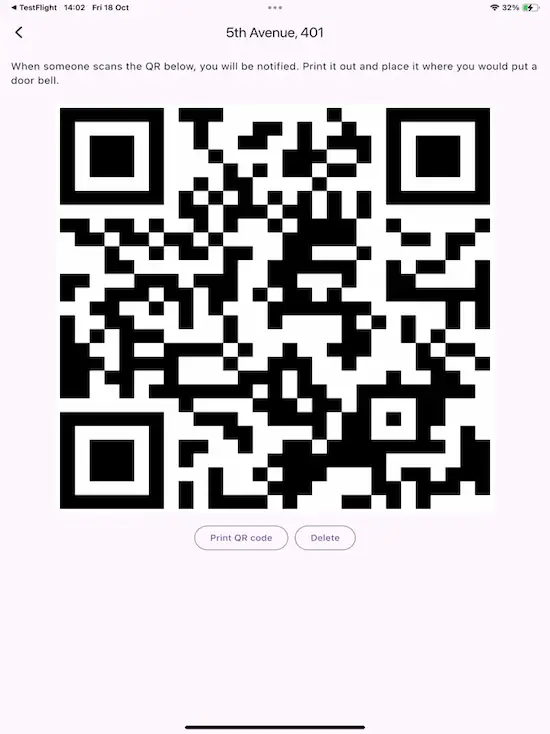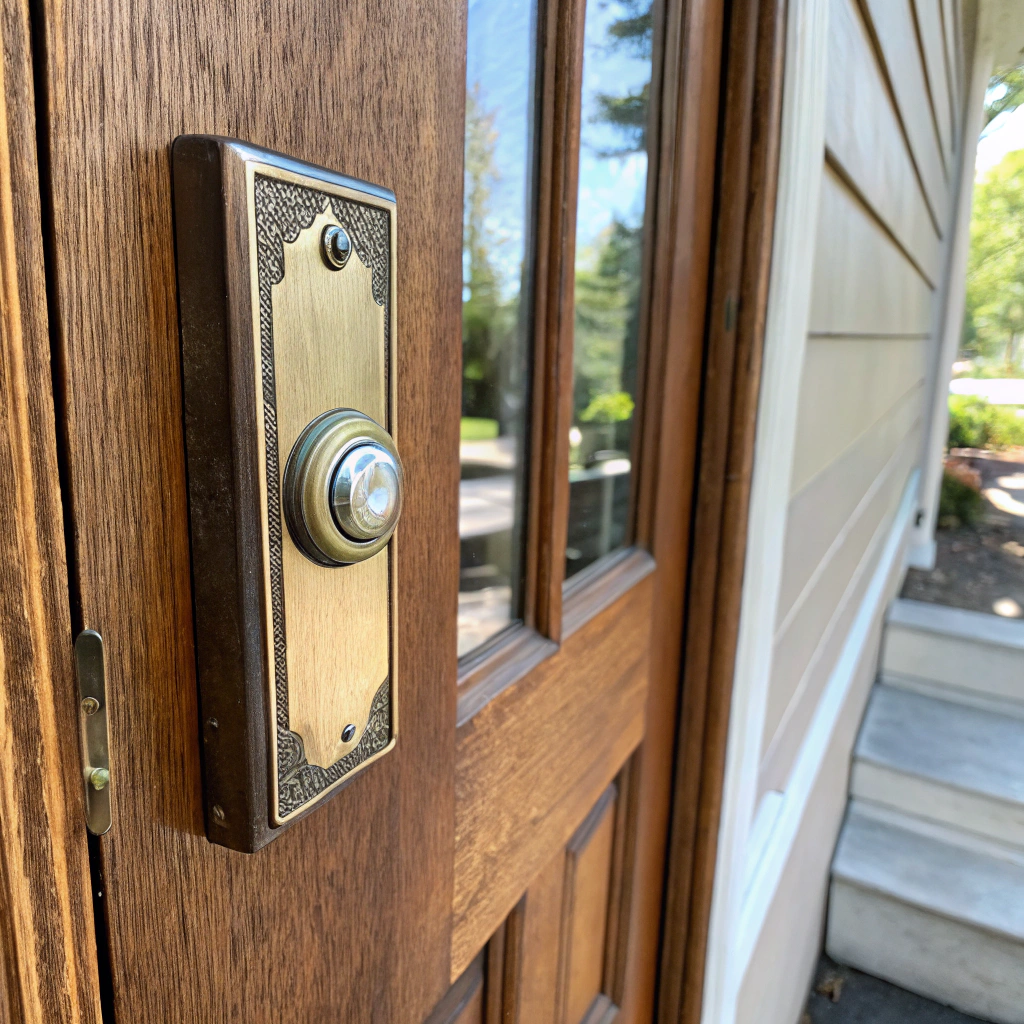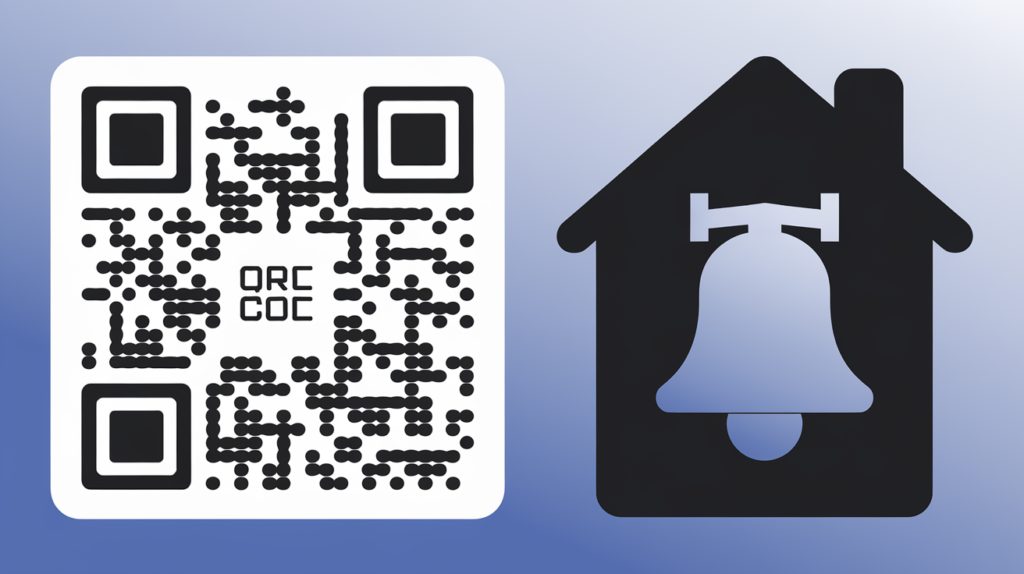QR Code Doorbell: The Smart Way of Smart Home Entry Solutions
Smart home technology continues to evolve, and one of the most innovative developments in home entry systems is the QR code doorbell. This revolutionary approach to visitor management combines the widespread accessibility of smartphone technology with the simplicity of QR codes, creating a wireless, battery-free alternative to traditional doorbells. By leveraging existing smartphone capabilities, QR code doorbells offer an elegant solution that transforms how we manage home entry communication.
Understanding QR Code Doorbells
The QR code doorbell represents a significant departure from conventional doorbell systems. Unlike traditional doorbells that require complex wiring installations or smart doorbells that depend on regular battery maintenance, QR code doorbells provide a streamlined, cost-effective approach to home entry communication. This innovative solution harnesses the power of smartphones to create a maintenance-free entry system that offers both simplicity and sophisticated functionality.
Advantages of QR Code Doorbell Systems
The implementation of a QR code doorbell system brings numerous advantages to homeowners. The most significant benefit lies in its zero-installation hardware requirements. Without the need for wiring, batteries, or physical buttons, these systems eliminate common maintenance issues while providing a vandal-proof and weather-resistant solution when properly laminated.
From A Financial Perspective, QR code doorbells represent an extremely cost-effective entry solution. The minimal initial investment, coupled with virtually non-existent maintenance costs and no replacement parts, makes this system particularly attractive for budget-conscious homeowners. The energy efficiency of using visitors’ device power and the ability to manage multiple entry points at no additional cost further enhance its economic appeal.
The Functionality Of QR Code Doorbells extends well beyond basic entry announcement. These systems enable real-time video communication, location-independent notifications, and comprehensive visitor scheduling capabilities. Users benefit from message logging and history features, as well as the ability to customize welcome messages for different situations.
Accessibility remains a key focus of QR code doorbell systems. With built-in support for multiple languages, text-based communication options, and voice command integration, these systems ensure inclusive access for all users. The disability-friendly interface and readily available emergency contact information make it a practical choice for diverse user needs.
Operating Principles and Implementation
The operation of a QR code doorbell follows a straightforward process that begins with initial setup through a dedicated app. Users can generate their unique QR code, and display it at their entrance. Visitors interact with the system by scanning the QR code with their smartphone camera, which provides access to a web-based interface for initiating communication.
For homeowners, the system delivers instant notifications and enables real-time video feeds of visitors. Through the app interface, they can communicate with visitors and manage access remotely, providing a seamless and secure entry management solution.
Installation Process and Best Practices
Setting up a QR code doorbell system involves a simple process that begins with downloading the official app and completing registration. After generating a unique QR code, users print it on weather-resistant material and mount it at their entrance. Key considerations for optimal performance include placing the code at eye level, ensuring adequate lighting, and using appropriate weather protection.
Applications and Implementation Scenarios
QR code doorbells find diverse applications across residential settings, including single-family homes, apartment complexes, and vacation rentals. The technology proves equally valuable in commercial environments such as office buildings, retail stores, and medical facilities. Temporary installations for construction sites, pop-up shops, and event venues demonstrate the system’s flexibility.

How QR Code Doorbells Work
- Initial Setup

- Download the QR doorbell app – Play Store,App Store
- Generate unique QR code
- Print and display the code
- Visitor Experience
- Scan QR code using smartphone camera
- Initiate communication
- Real-time video/audio connection
- Homeowner Response
- Receive instant notifications
- View visitor through camera feed
- Communicate through app interface
- Grant or deny access remotely
Installation and Setup

Step-by-Step Guide
- Download the official app from your device’s app store
- Complete the registration process
- Generate your unique QR code
- Print the code on weather-resistant material
- Mount the code at your entrance
- Test the system with a friend
Best Practices
- Place QR code at eye level
- Ensure adequate lighting
- Use weather-resistant covering
- Include brief instructions
- Consider multiple placement locations
Use Cases
Residential Applications
- Single-family homes
- Apartment complexes
- Vacation rentals
- Student housing
- Senior living facilities
Commercial Uses
- Office buildings
- Retail stores
- Medical facilities
- Educational institutions
- Co-working spaces
Temporary Setups
- Construction sites
- Pop-up shops
- Event venues
- Real estate showings
- Temporary accommodations
Economic Analysis and Cost Comparison
When comparing entry system options, QR code doorbells demonstrate significant cost advantages. Traditional doorbells typically incur hardware costs of $20-$100, plus installation fees of $100-$300 and ongoing maintenance expenses. Smart doorbells can cost between $100-$300 for the device alone, with additional installation and subscription fees.

Traditional Doorbell
- Hardware costs: $20-$100
- Installation: $100-$300
- Maintenance: $20-$50/year
- Battery replacement: $10-$20/year
- Total first-year cost: $150-$470
Smart Doorbell
- Device cost: $100-$300
- Installation: $0-$200
- Subscription: $30-$100/year
- Battery replacement: $20-$40/year
- Total first-year cost: $150-$640
QR Code Doorbell
- App subscription:$0
- Printing costs: $5
- Installation: $0
- Maintenance: $0
- Total cost: $5 – $15
FAQs
Q: What happens if a visitor doesn’t have a smartphone?
A: Consider maintaining a traditional doorbell as backup or providing alternative contact information for non-smartphone users.
Q: Does the QR code work in low light conditions?
A: Most modern smartphones can scan QR codes in low light, but installing adequate lighting is recommended for optimal performance.
Q: Is the system secure against unauthorized access?
A: The system employs end-to-end encryption and unique session tokens to prevent unauthorized access and ensure secure communications.
Q: What happens during power or internet outages?
A: The QR code itself requires no power, but communication requires internet connectivity. Consider backup solutions for extended outages.
Q: Can multiple household members receive notifications?
A: Yes, multiple users can be added to a single QR code doorbell account, with customizable notification settings for each user.
Summary
QR code doorbells represent an innovative leap forward in home entry solutions, offering a perfect blend of simplicity, functionality, and cost-effectiveness. As smartphone technology continues to evolve and become more ubiquitous, this solution provides a glimpse into the future of smart home connectivity. Whether you’re looking to upgrade your existing doorbell system or seeking a flexible, maintenance-free alternative, QR code doorbells offer a compelling option worth considering.








